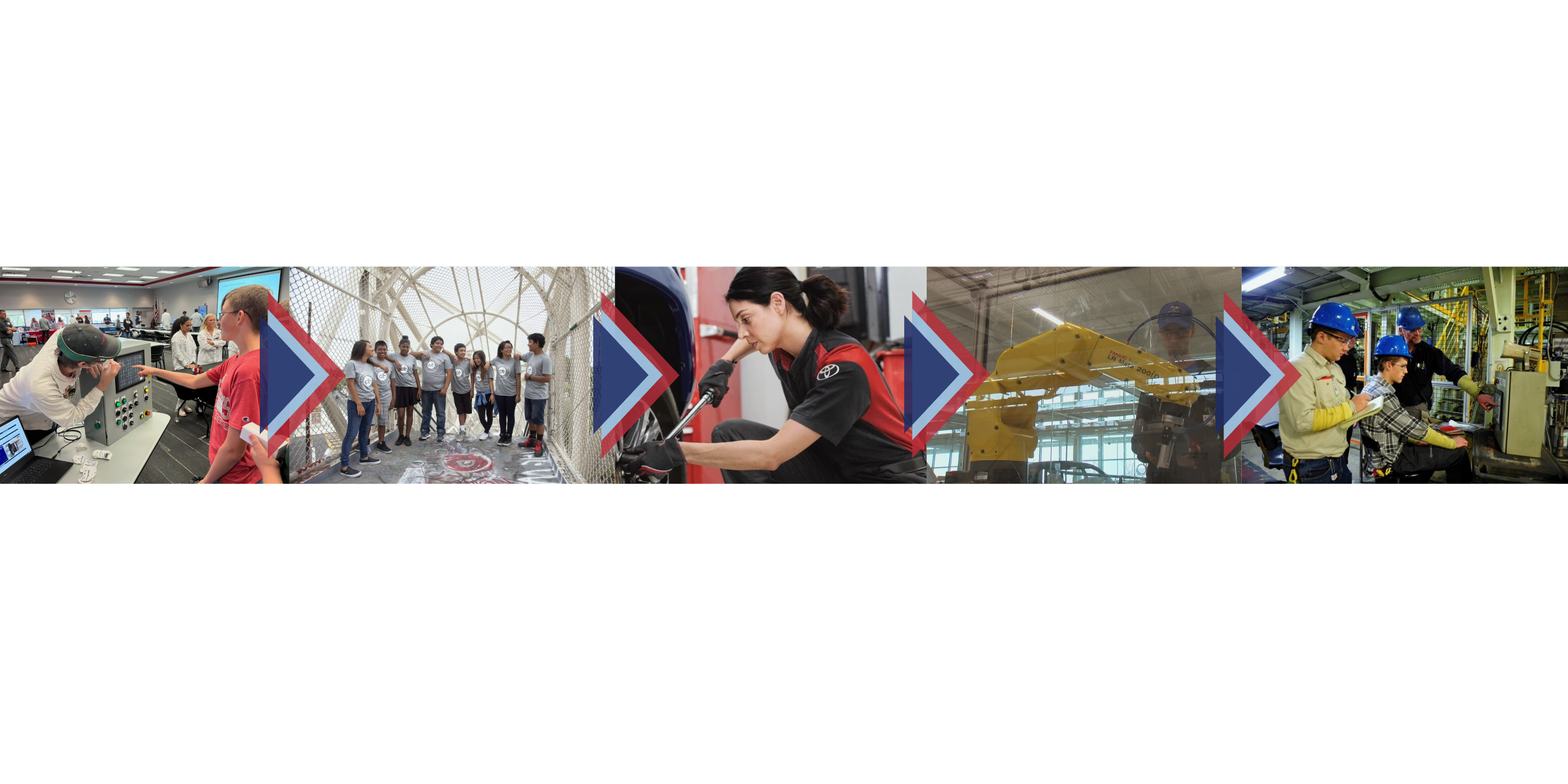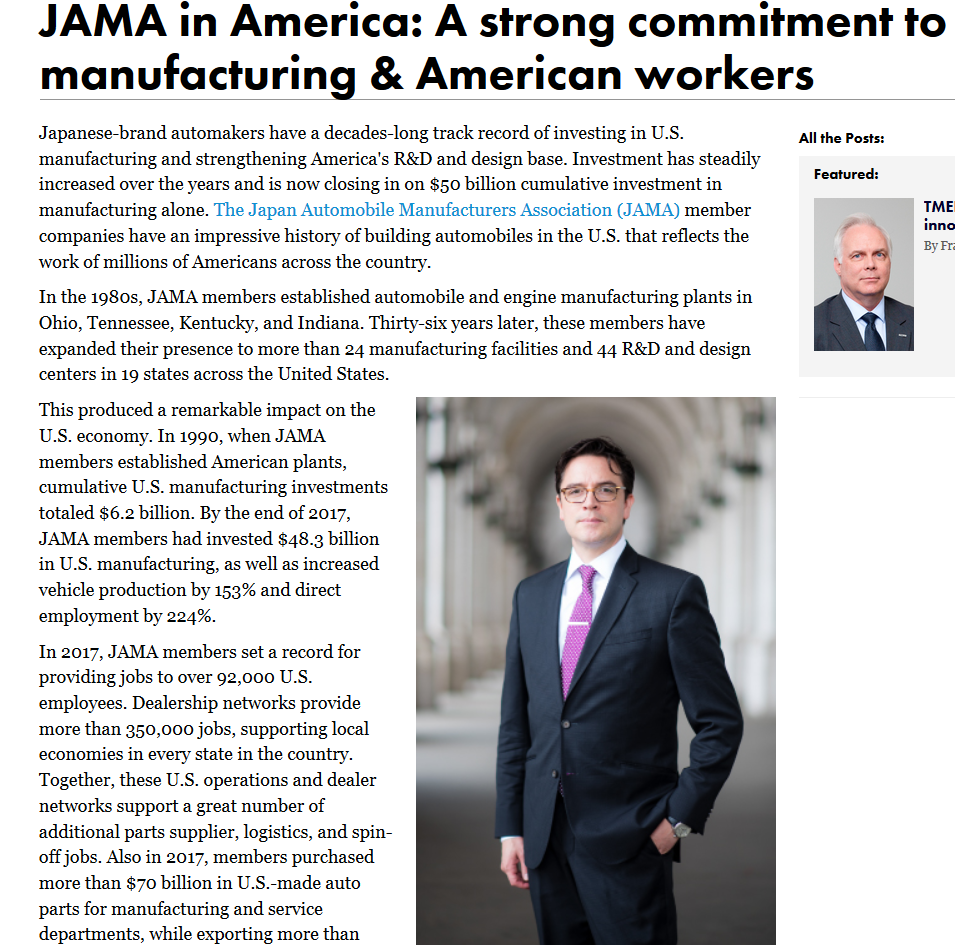Japanese-brand automakers have a decades-long track record of investing in U.S. manufacturing and strengthening America’s R&D and design base. Investment has steadily increased over the years and is now closing in on $50 billion cumulative investment in manufacturing alone. The Japan Automobile Manufacturers Association (JAMA) member companies have an impressive history of building automobiles in the U.S. that reflects the work of millions of Americans across the country.
In the 1980s, JAMA members established automobile and engine manufacturing plants in Ohio, Tennessee, Kentucky, and Indiana. Thirty-six years later, these members have expanded their presence to more than 24 manufacturing facilities and 44 R&D and design centers in 19 states across the United States.
This produced a remarkable impact on the U.S. economy. In 1990, when JAMA members established American plants, cumulative U.S. manufacturing investments totaled $6.2 billion. By the end of 2017, JAMA members had invested $48.3 billion in U.S. manufacturing, as well as increased vehicle production by 153% and direct employment by 224%.
In 2017, JAMA members set a record for providing jobs to over 92,000 U.S. employees. Dealership networks provide more than 350,000 jobs, supporting local economies in every state in the country. Together, these U.S. operations and dealer networks support a great number of additional parts supplier, logistics, and spin-off jobs. Also in 2017, members purchased more than $70 billion in U.S.-made auto parts for manufacturing and service departments, while exporting more than 420,000 vehicles to dozens of countries around the world from their U.S. plants.
The trend continues with the recently announced $1.6 billion Toyota-Mazda joint venture, set to begin production in Huntsville, Alabama, by 2021. This investment will provide up to 4,000 direct jobs and support thousands more in supplier, logistics, and spin-off employment.
In addition to their economic impact, Japanese-brand automakers have established workforce development initiatives that promote the up-skilling and professional growth of their existing employees. This cultivates new high-skilled talent into their organizations, and injects significant expertise, technology, and financial resources into the workforce that also benefit other members of their communities and related industries.
By doing so, JAMA members are ensuring the long-term success and sustainability of their U.S. operations, especially as it increasingly requires high-skilled employees. This activity also directly promotes the long-term sustainability of the broader automotive and manufacturing industries in the United States.
Leveraging partnerships with local and national educational institutions, from primary and secondary schools to technical colleges, universities, and advanced research institutions, JAMA members are playing a direct role in transforming the delivery of education to develop a talent pipeline for the future American workforce. These efforts provide students with rewarding learning experiences and career pathways. Whether or not they pursue careers with a JAMA member, many of these young people go on to careers in technology-integrated manufacturing, robotics, and other advanced fields. In this way, members are doubling down on the future of the American auto industry and the capacity of the country to thrive in an evolving global economy.
As time goes on, more and more Americans enjoy the safety, reliability, fuel-efficiency, and innovative design that JAMA member vehicles offer. The auto industry is also changing, as innovations advance in connectivity, autonomous driving, artificial intelligence, fuel cell and electric vehicle technologies, which JAMA members are at the forefront of.
Maintaining the global competitiveness of the U.S. auto industry amidst this evolution means focusing on challenges with forward-thinking approaches. Through smart policies that expand opportunities for the effective integration of technology, manufacturing, and motor vehicle transportation, the industry can continue to hone its competitive edge by strengthening and growing American manufacturing, R&D, and design bases for years to come.
Source: GMI Post
Click to View PDF:


